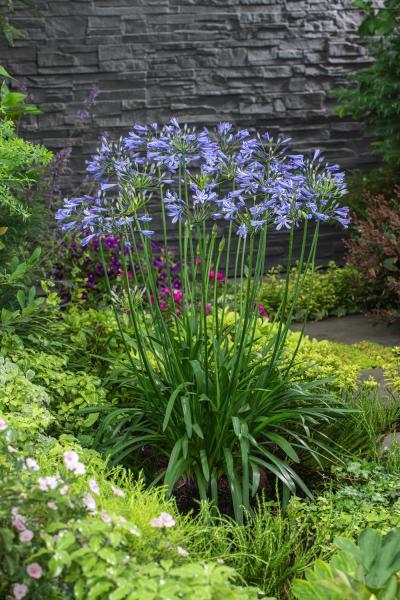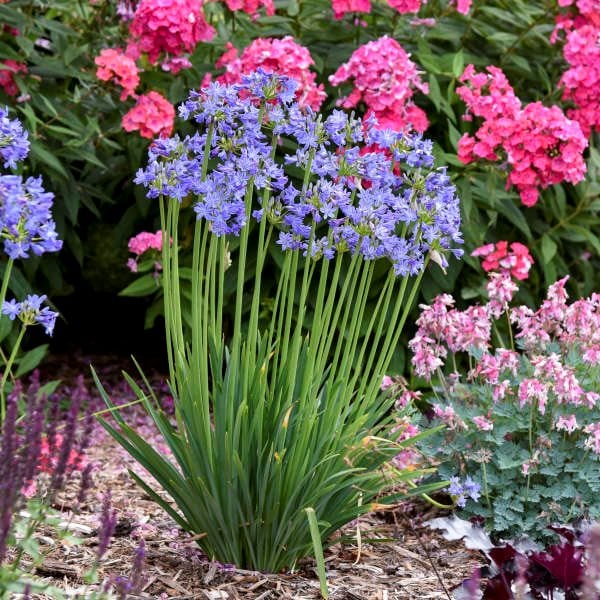Agapanthus Propagation: Tips for Expanding Your Plant Collection
Agapanthus Propagation: Tips for Expanding Your Plant Collection
Blog Article
Releasing the Secret to Effective Agapanthus Farming: Advice for a Flourishing Garden
In the realm of horticulture, cultivating agapanthus effectively requires a strategic technique that encompasses numerous aspects of plant treatment. With cautious attention to information, one can unlock the keys to nurturing these stunning blooms, leading to a yard that thrives with beauty and vibrancy. By comprehending the nuances of agapanthus growing, one can create an atmosphere where these plants thrive and grow generously. In the adhering to discussion, we will certainly explore necessary suggestions and tricks that will certainly assist you towards a flourishing agapanthus garden, supplying understandings into ideal practices, dirt problems, watering methods, and a lot more.
Growing Agapanthus: Best Practices
When planting Agapanthus, correct dirt prep work is vital for ensuring effective growth and advancement of these stunning flowers. Agapanthus, generally called Lily of the Nile or African lily, prospers in well-draining dirt with a somewhat acidic to neutral pH level - Agapanthus. Prior to growing, it is crucial to amend heavy clay soils with raw material such as garden compost or peat moss to boost drainage and supply crucial nutrients for the plants
To plant Agapanthus, pick an area that receives full sunlight to partial color, as this will certainly advertise healthy development and bountiful flowering. Dig an opening two times the size of the plant's origin sphere and put the Agapanthus at the exact same deepness it was formerly growing. Gently backfill the opening with dirt, weighing down strongly to get rid of any kind of air pockets around the origins.
Water the newly grown Agapanthus thoroughly and remain to maintain the soil equally wet, especially throughout the plant's energetic expanding season. Agapanthus. Using a well balanced fertilizer once a month can additionally sustain the plant's development and flowering. By following these best techniques for growing Agapanthus, you can produce a magnificent display of these fascinating blossoms in your garden
Suitable Dirt Issues for Agapanthus
For optimum growth and growing success of Agapanthus plants, making certain the soil conditions are perfect is important. Agapanthus grows in well-draining dirt with a somewhat acidic to neutral pH degree ranging from 6.0 to 7.0. This kind of soil enables for adequate water drain, stopping waterlogging which can lead to root rot. To enhance soil water drainage, consider adding raw material such as compost or peat moss when preparing the planting site. Furthermore, Agapanthus prefers soil that is rich in nutrients, so including a well balanced fertilizer during the growing season can advertise healthy and balanced growth and vivid blooms.

Watering and Fertilizing Tips
To make sure healthy growth and dynamic blooms, correct watering and fertilizing strategies are necessary for effective Agapanthus cultivation. Agapanthus plants gain from routine watering, especially during the expanding season. It is advised to water deeply when a week, guaranteeing the dirt is moist but not saturated. Throughout heat or in pots, more regular watering might be needed to prevent the dirt from drying completely.
When it involves fertilizing Agapanthus, a well balanced fertilizer with equal parts nitrogen, phosphorus, and potassium can be applied in the springtime to advertise healthy growth and blooming. Slow-release plant foods are excellent for offering nutrients progressively over useful source an extensive duration. Prevent over-fertilizing, as this can lead to extreme foliage development at the cost of flowers.
In addition, including raw material like compost into moved here the dirt can enhance nutrient degrees and boost soil framework, helping in the general health and wellness of the Agapanthus plants. By complying with these watering and fertilizing tips, gardeners can guarantee their Agapanthus plants grow and generate sensational screens of flowers.
Pruning and Deadheading Strategies
Proper trimming and deadheading methods play a crucial duty in maintaining the health and appearances of Agapanthus plants, complementing the important techniques of watering and fertilizing for effective growing. Trimming Agapanthus entails removing invested blossom heads, dead or yellowing leaves, and general shaping of the plant to promote much better growth. Deadheading, the procedure of removing faded blossoms, not only enhances the plant's look yet also urges additional flowering.
When deadheading Agapanthus, it is a good idea to clip off the flower stem at the base using sharp, tidy shears. This process reroutes the plant's power from seed manufacturing back right into origin and foliage development, promoting a healthier and more robust plant. Routine deadheading can expand the flowering duration of Agapanthus and protect against self-seeding, which can bring about overcrowding.
In terms of trimming, Agapanthus usually take advantage of a light trim after blossoming to clean up the plant and motivate fresh growth. Cutting down the invested flower stems and eliminating any kind of damaged or dead vegetation aids maintain the plant's vitality and general appearance. Nonetheless, it is necessary to avoid cutting into the crown of the plant, as this can damage its wellness.

Protecting Agapanthus From Vermins and Diseases
Carrying out effective insect and illness monitoring techniques is important to securing the wellness and vitality of Agapanthus plants in cultivation. One common pest that affects Agapanthus is the Agapanthus borer, a caterpillar that passages right into the plant, causing damages to the flowers and fallen leaves.
In addition to site pests, Agapanthus are susceptible to diseases such as root rot and fungal leaf areas. By remaining alert and dealing with parasite and condition concerns immediately, garden enthusiasts can assist their Agapanthus flourish and prosper.

Verdict
In verdict, successful farming of agapanthus needs proper planting methods, perfect dirt problems, sufficient watering and feeding, routine trimming and deadheading, and defense from diseases and insects. By adhering to these pointers and techniques, gardeners can ensure a flourishing yard loaded with stunning agapanthus flowers. Agapanthus. Bear in mind to maintain regular treatment and focus to detail to advertise the wellness and durability of these stunning plants
When planting Agapanthus, proper dirt prep work is important for making sure effective growth and development of these beautiful blossoms.Water the newly grown Agapanthus extensively and continue to keep the dirt uniformly moist, specifically throughout the plant's active expanding period.For optimum development and growing success of Agapanthus plants, making certain the dirt problems are excellent is essential. When transplanting or growing Agapanthus, make sure the soil is well-prepared to give the necessary structure for the plants to establish themselves efficiently. One typical pest that influences Agapanthus is the Agapanthus borer, a caterpillar that tunnels right into the plant, triggering damages to the leaves and flowers.
Report this page